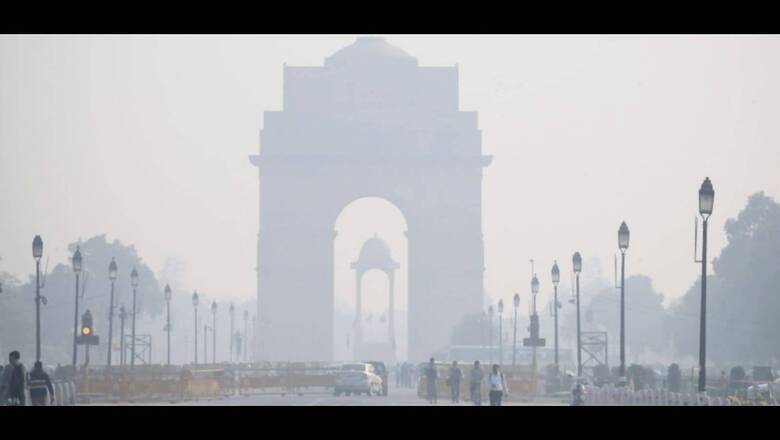
views
A study into Delhi’s air quality by the Central Pollution Control Board has revealed that it is in the lower end of ‘moderate’ category, with an overall Air Quality Index (AQI) of 105 and is likely to worsen by the end of the coming week.
System of Air Quality and Weather Forecasting And Research (SAFAR), the forecasting body under the Union ministry of earth sciences, said that AQI will remain in the moderate category for the next three days. PM10 has been held as the lead pollutant due to dry air coming from northwest India.
Meanwhile, the Met department has forecast that rain is unlikely in Delhi for the next seven days. The maximum temperature recorded on Sunday was 36.2 degrees Celsius, two degrees above normal. The minimum temperature settled at 26.6 degrees Celsius, five degrees above normal.
Rise of Air Pollution in October
Delhi’s air quality index in the first two weeks of October was worse than in the same period in 2018 and 2019, according to CPCB data. The average AQI for Delhi from October 1 to 14 was 212, a significant rise from last year’s 159 in the same fortnight and 207 in 2018. The capital also logged a high AQI of 300 in 2020 fortnight against a high of 270 in 2019 and 262 in 2018.
Air pollution in Delhi is worrisome and is caused due to a variety of factors. The first and foremost is the input of pollutants, followed by weather and local conditions. Every year in October, Delhi’s air quality inevitably starts to dip. October marks the withdrawal of monsoons in Northwest India, during which the prevalent direction of the wind is easterly. These winds travel from over the Bay of Bengal, carry moisture, and bring rains to this part of the country. Once monsoon withdraws, the direction of winds changes to northwesterly. During summers, too, the direction of the wind is northwesterly.
Also Read: Drug Runners’ Dry Run at Mundra Port in June Before September Bust Helped DRI Identify Runners, Payment: Report
As per a study conducted by scientists at the National Physical Laboratory, 72 percent of Delhi’s wind in winters comes from the northwest, while the remaining 28 percent comes from the Indo-Gangetic plains.
Stubble Burning a Major Cause
Last year around October, the AQI touched very poor levels. Commenting on the pollution levels, Union Environment Minister Prakash Javadekar said the contribution of stubble burning was only 4 percent that day. Farm fires have been an easy way to get rid of paddy stubble quickly and at a low cost for several years. A 2015 study on Delhi’s air pollution conducted by IIT-Kanpur also states that 17-26% of all particulate matter in Delhi in winters is because of biomass burning. Last year, during peak stubble burning incidents, its contribution rose to 40%.
How Can This Be Curbed?
High levels of air pollution in Delhi are a year-round problem, which can be attributed to unfavorable meteorological conditions, farm fires in neighboring regions, and local sources of pollution. As part of its air pollution monitoring plan, the Delhi govt had last year installed anti-smog guns at large construction sites in the national capital to control pollution. Reportedly smog guns were also placed at 10 construction sites in Delhi.
The tree transplantation policy of the Delhi government mandates 80% of the trees affected by construction and development activities must be transplanted, along with 80% out of them surviving after a year.
In an effort to reduce the contribution of vehicular emissions to Delhi’s PM2.5 concentrations, the Delhi government has introduced the new EV policy. The government is providing subsidies and incentives on their purchase to promote large-scale adoption of EVs.
A war room to monitor all anti-pollution measures has also been set up, along with a Green Delhi App where people can report pollution-causing activities in the city. The War Room will monitor the progress of the measures daily, and the daily reports will be personally analyzed by CM Arvind Kejriwal.
Read all the Latest News , Breaking News and IPL 2022 Live Updates here.


















Comments
0 comment